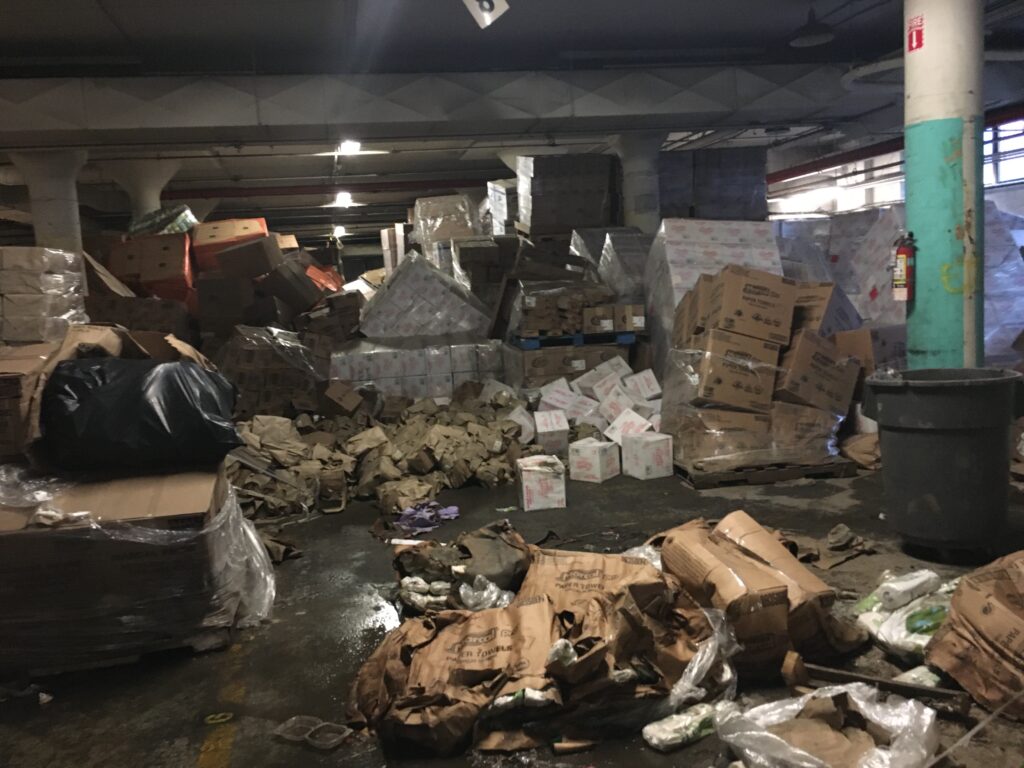
Photo of Collapsed Area in Early Phases of Project
After Hurricane Ida dumped torrential rain in NYC in 2021, a warehouse suffered an extensive loss of boxed merchandise on pallets stacked 3 to 4 levels in height (up to 14'). The loss was so extreme that all access to the main warehouse was completely blocked with products!
Sentry Salvage took the reigns and devised an action plan to open the warehouse back up. The plan required inventory work, disposal of total loss goods, recycling of paper-based and plastic wet goods based on the substrate (PolyPropylene, PolyEthylene, Paper), and segregation and grading of goods based on substrate, the extent of damage, and quality of salvage. All 3 processes needed to happen simultaneously because once we worked in a new section, the floor space was taken up.
Here is a picture after we started gaining space
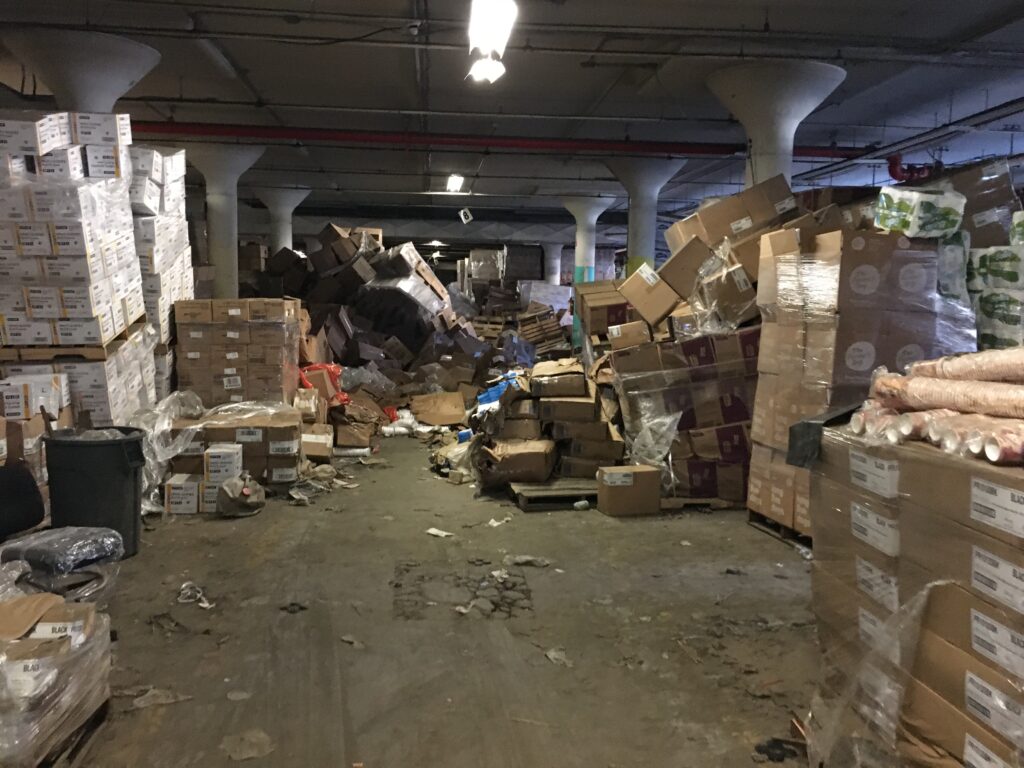
We started to gain traction, separating, and segregating the nearly 4,000 pallets of merchandise. The bottom half of each pallet was soaked with water and the boxes were weak and unstable. This caused the upper pallets to "lean" onto other pallets, concrete columns, and walls. Our "Extraction" expert team would tip the upper pallets back to level and our experienced machine operators would then scoop up the pallet with the forklift or truck, and gently place it safely on the ground.
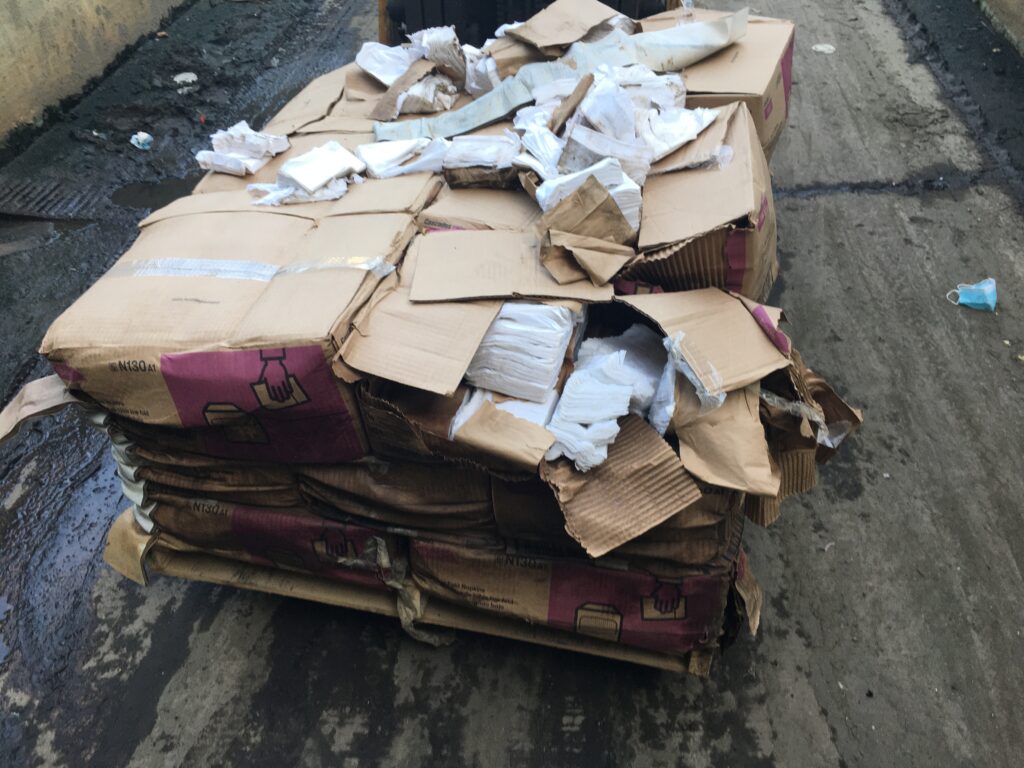
Recycling to Save Money
Sentry Salvage recycled many paper-based pallets of stock locally to lower the claim costs. A pallet such as this one weighs 100 pounds when dry and 700 pounds when wet. Today's high cost of dumping means each pallet or lot recycled impacts your bottom line!
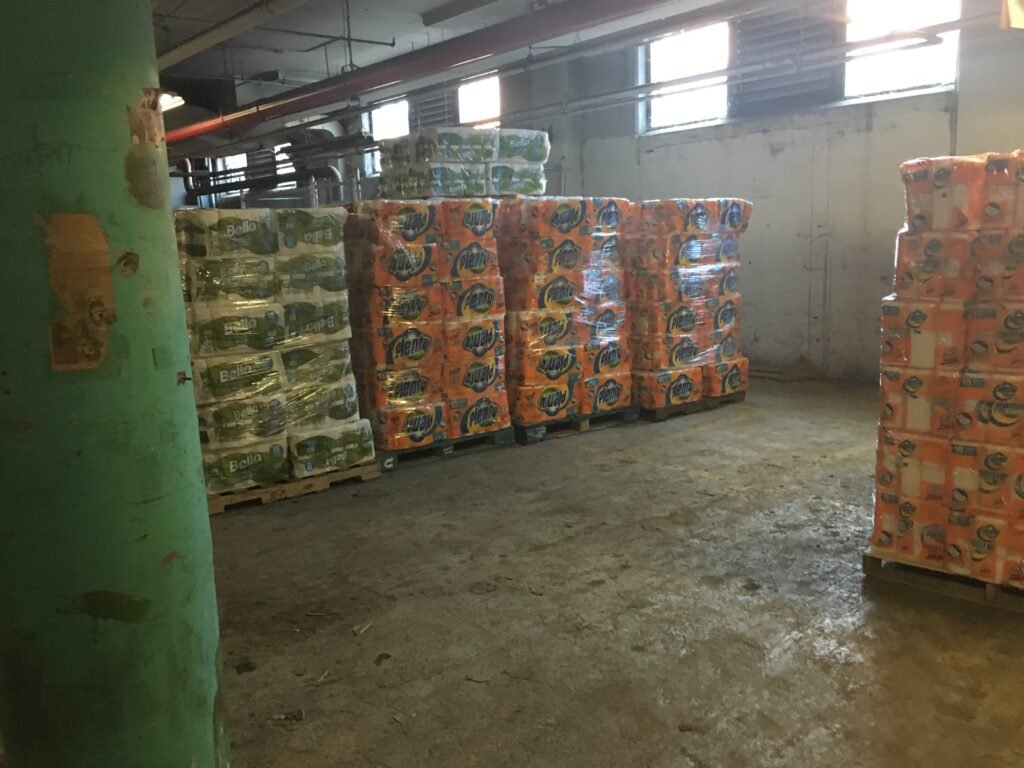
Retention Pallets - A Great Way to Reduce Costs
Sentry Salvage separated out numerous truckloads of products that were retained by the Insured which really drilled down the claim valuation. Hundreds of thousands of dollars were deducted from this claim through retention.
Rough Condition? No Problem for Sentry
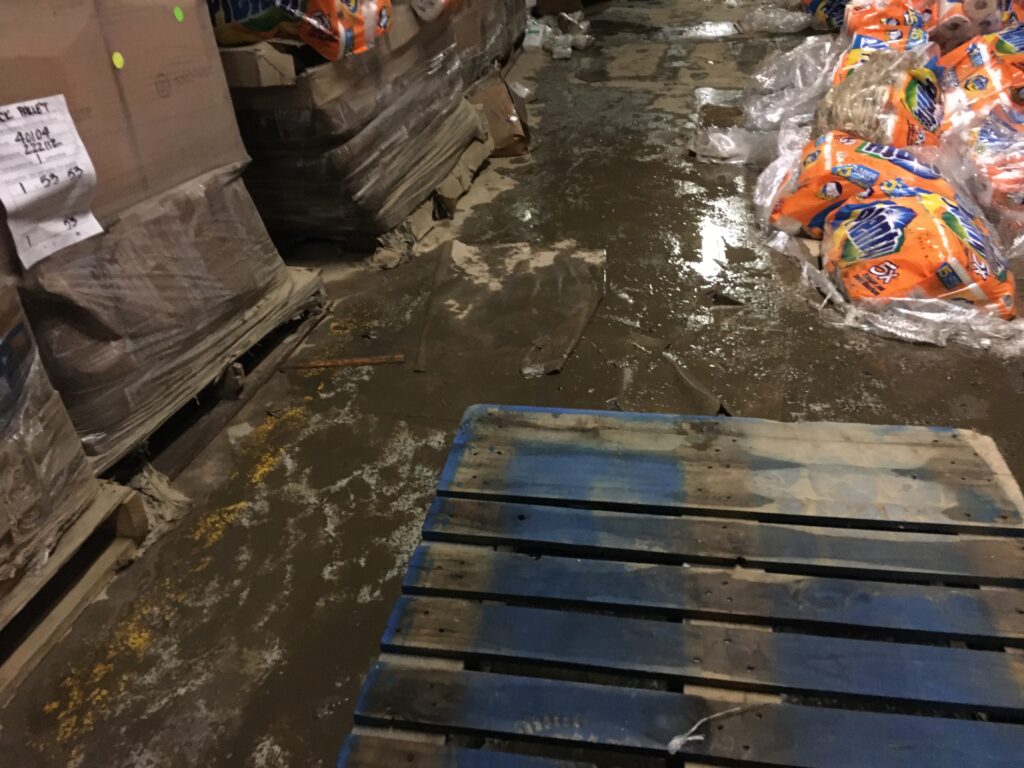
Sentry Salvage painstakingly separated out the water-damaged goods and saved the goods above the waterline. In this photo, most of the goods are paper-based, as evidenced by the bottom layer of boxes completely compressing. Many of the pallets like this were recycled without additional box breakdown or handling, thus lowering costs.
After the Segregation of Wet Stock, We Completed a Joint Inventory
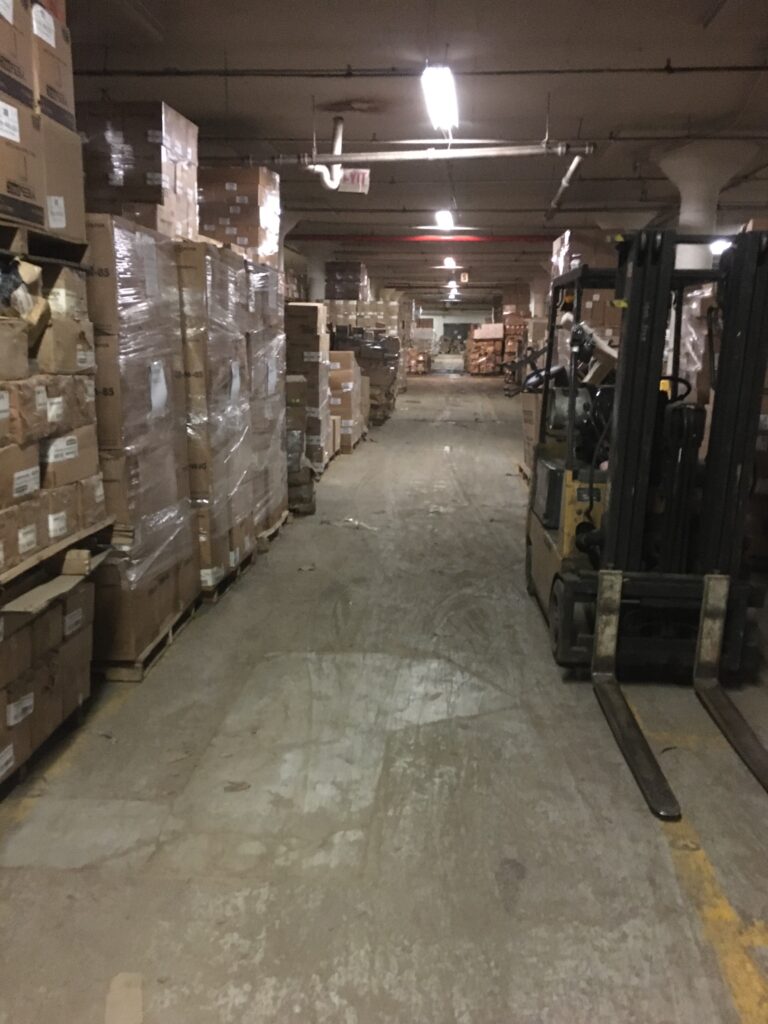
After a complete separation and segregation of wet from dry, we counted the stock with the Insured Managers. The Joint inventory was conducted over a 2-day period and included approximately 2,000 pallets of merchandise. Once the inventory was completed the sheets were double-checked for errors and submitted.
Sentry then liquidated the stock in an orderly fashion to cycle out the affected goods and finalize the claim.
Here is what the warehouse looked like when we were done removing all the stock.
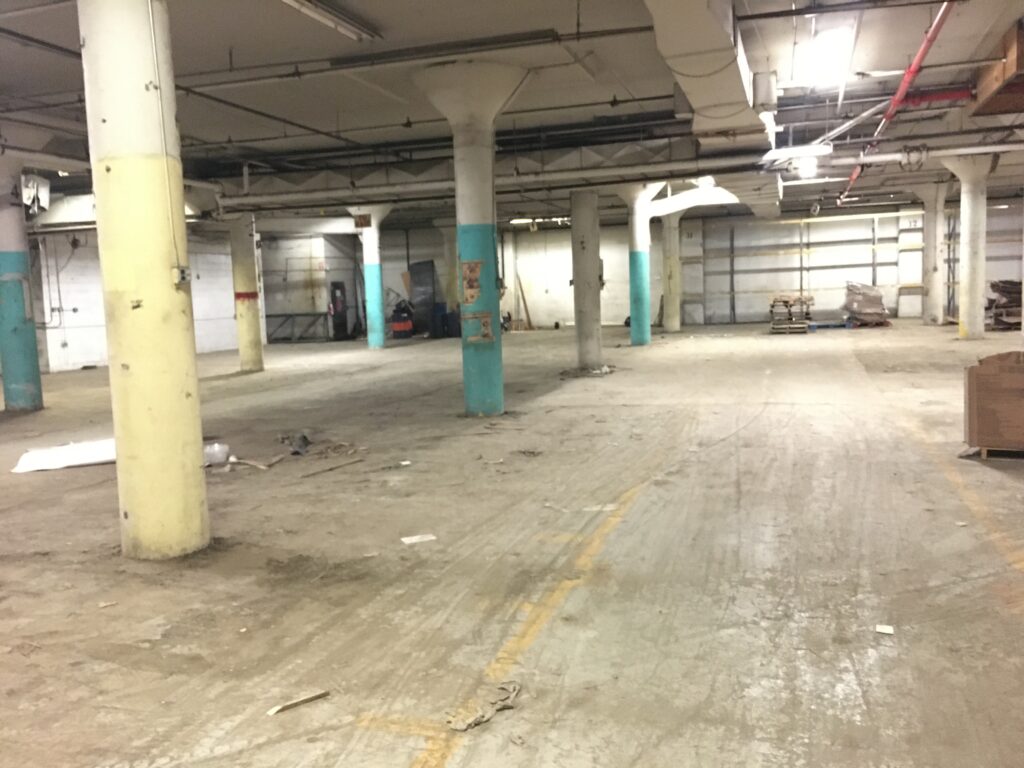
The warehouse was turned over to the cleaners/restorer for the next steps.
A very successful project that minimized costs and maximized salvage and recycling!
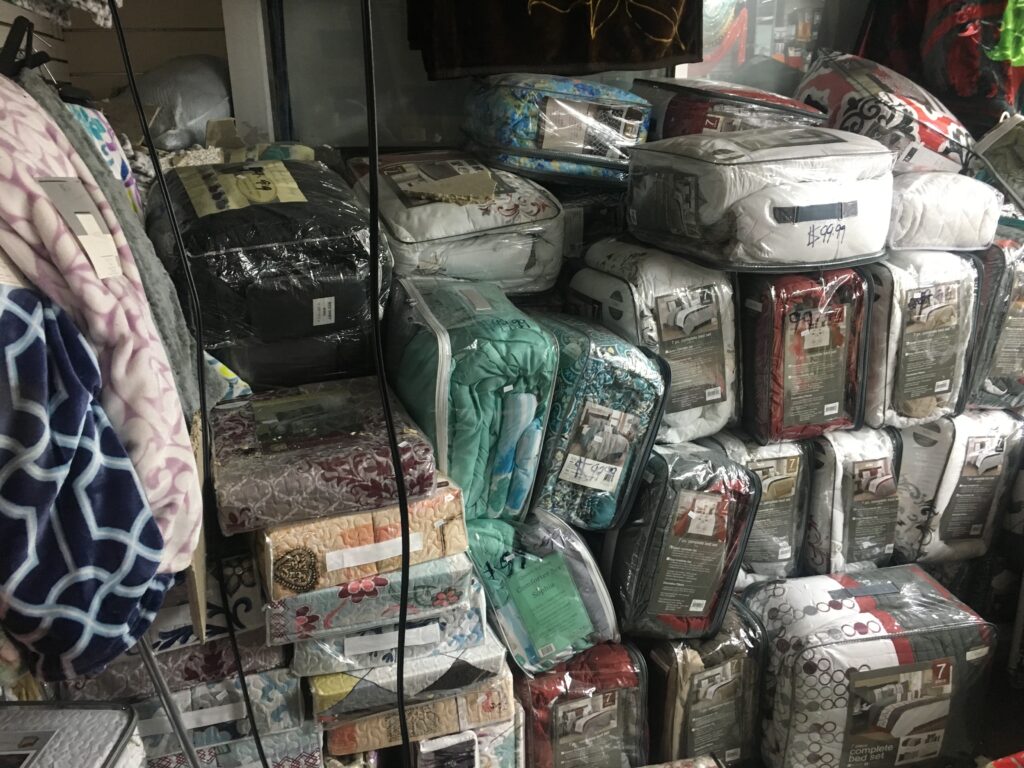
Expert Loss Evaluation Sentry
We received a call from an independent adjuster for an inner-city home goods store. It was floor to ceiling of smoke-damaged bed sheets and linens, and Sentry staff quickly evaluated the loss at the retail values and backed into cost value through invoice review.
We were able to determine the actual net cost of the product with shipping to the store. When we compared the Sentry figures to the claimed figures, the adjuster was able to settle the claim below the original estimate.
Here is how we did it:
First we counted all the stock at the listed retail and arrived at a gross retail value and total piece count.
Second, we gathered numerous invoices from the insured, and we cross-referenced 50 samples of exact product matches through style number reference or brand and style name. We used pictures to back up our findings.
Third, we keyed in the sample findings (Style number, Quantity, Retail, Cost, Shipping Cost) and then calculated both a weighted and unweighted percentage. We removed the highest and lowest 2 sampled percentages to reduce error.
Fourth, we sent our reports and the adjuster and insured agreed to our figures.
Finally, we salvaged the lot, basically broom cleaned the store, at no cost to the carrier, and provided a positive salvage recovery payment after all expense. A true win-win!
Sentry Salvage - Hands On Company Willing to Assist on Difficult Collapse Losses
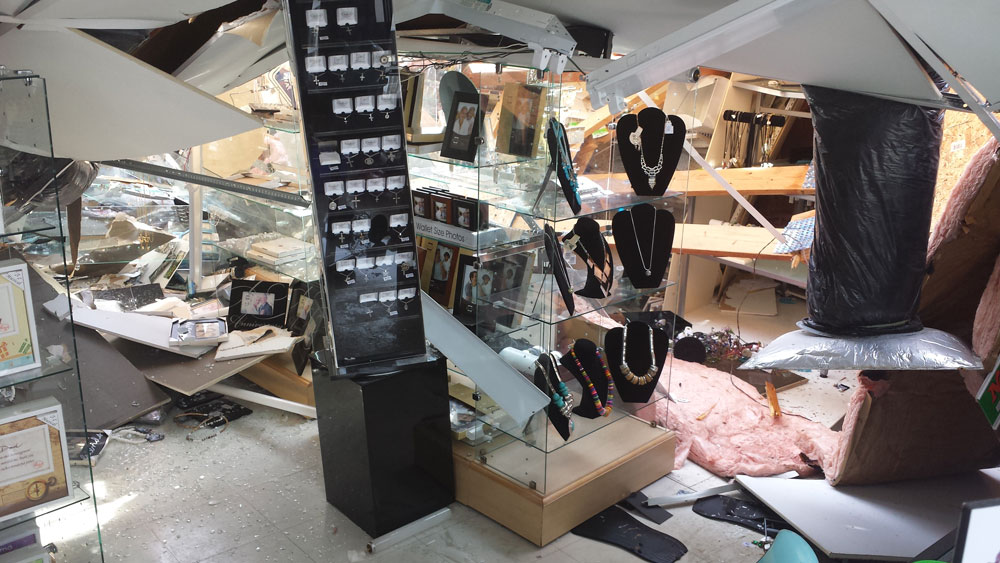
The piling snows of late winter 2014 and then a quick warmup created disasters all over the tri-state area. Roofs could not handle the weight of the 20” dumping of fresh snow followed by a quick spike in the temperature. In our next case study, Sentry had virtually minutes to make impactful decisions on which the success of the project hinged.
A wood truss strip mall in Central New Jersey was no match for the weight of the snowpack of late winter 2014. The supports began creaking midweek at this busy apothecary. With all employees and customers safely evacuated, there was a loud rasp of beams snapping, and the pitched roof was suddenly flat, looking like a pancake. The only backing for the roof was the concrete block side of the structure, which gripped the edges of the roof as it sagged inward to the center of the store.
Amazingly, the store shelving was jarred but not wrecked, and the product was surprisingly salvageable. Sentry’s man on the ground was 20 year plus salvor who was able to navigate through the maze of red tape in minutes to gain valuable access to the main corridors of the store. This inspection proved hugely important as the company hired to take down the structure were poised with engines running. After the store management was able to gain access to remove valuable items, Sentry Salvage quickly formulated an inventory/salvage value and condition report for future use.
Minutes after our inspection, a Track Hoe began leveling the structure with the approval of the local officials. In the 10-minute inspection we were able to glean valuable inventory data to contribute to the appraisal process that lie ahead.
